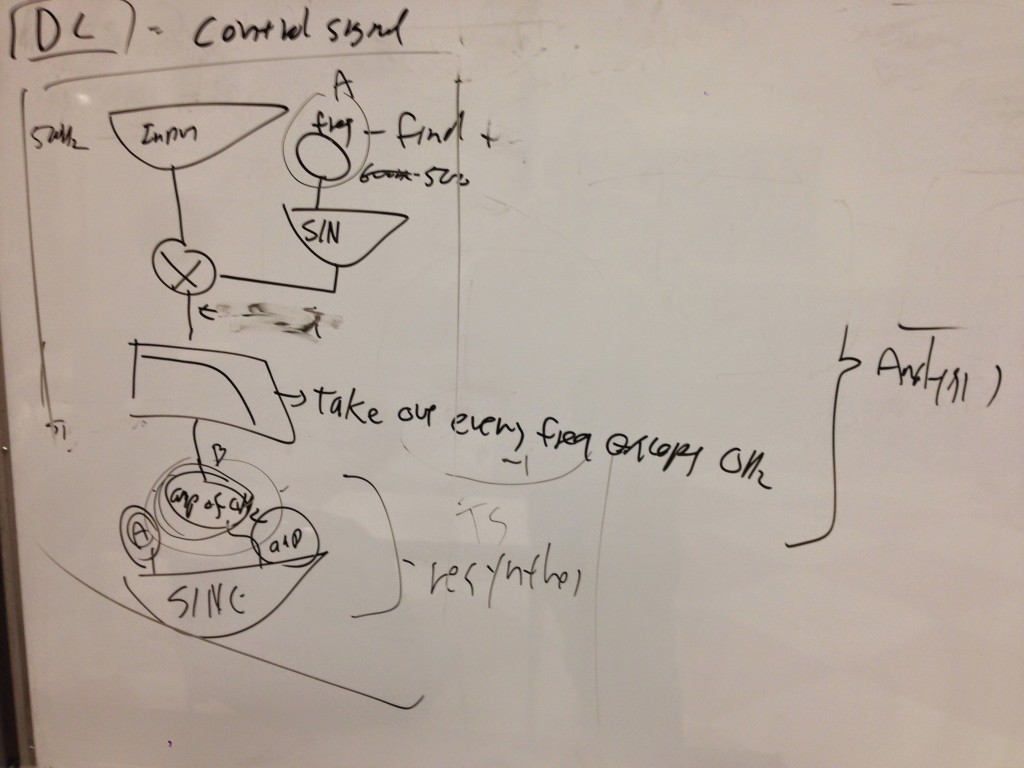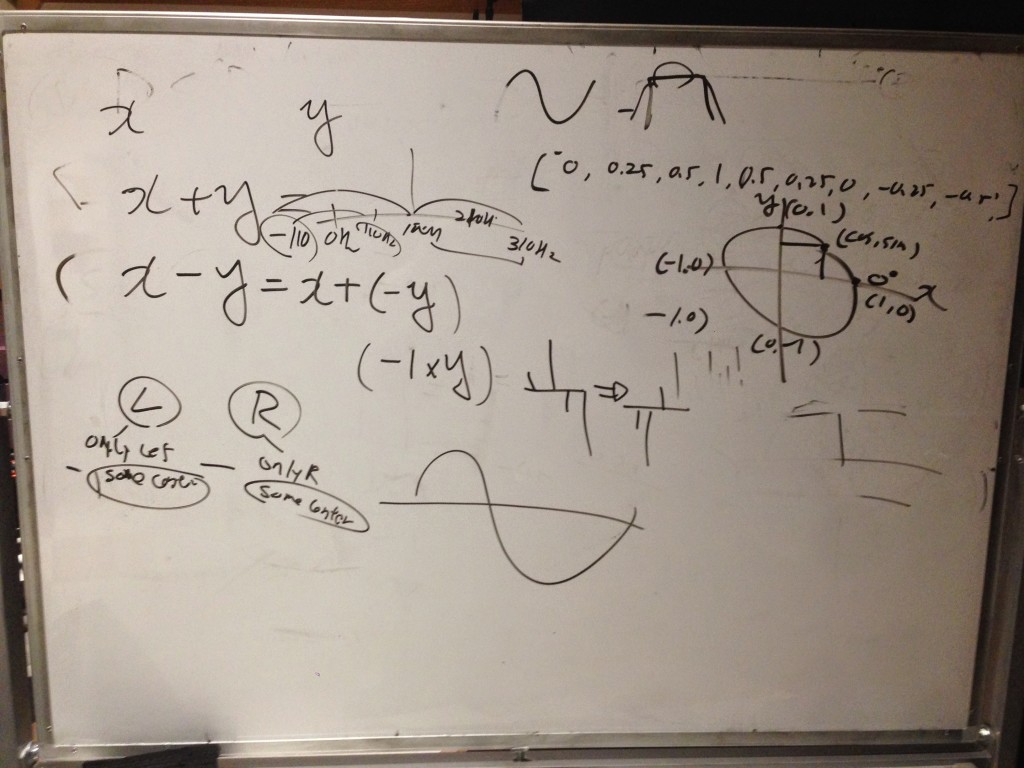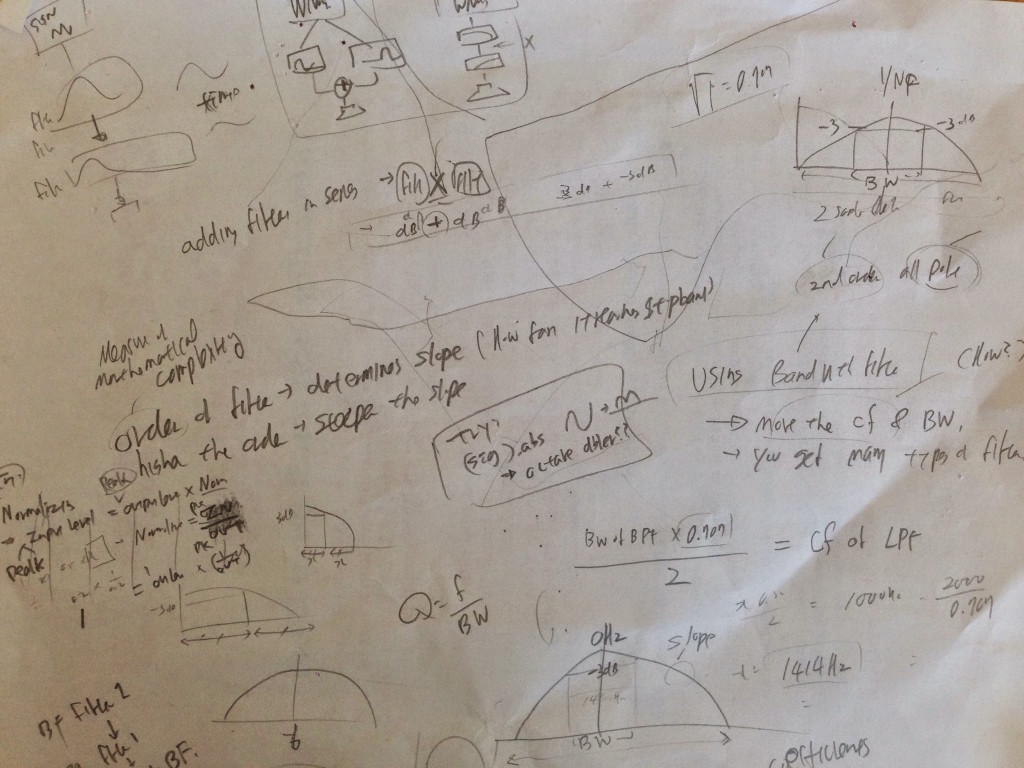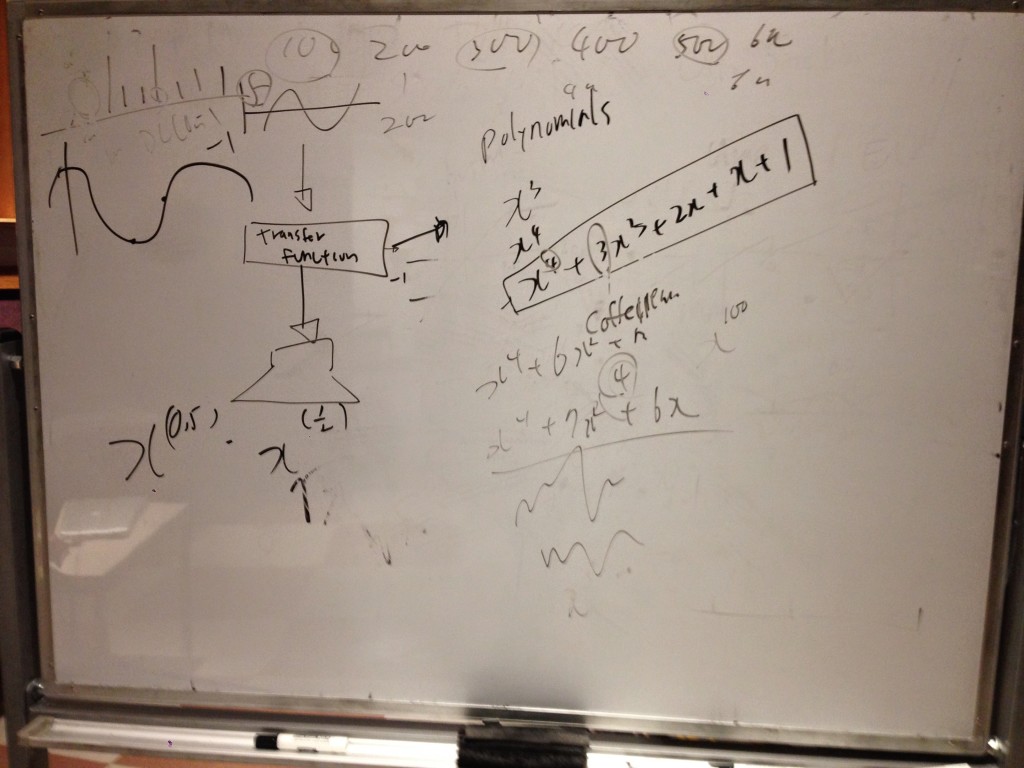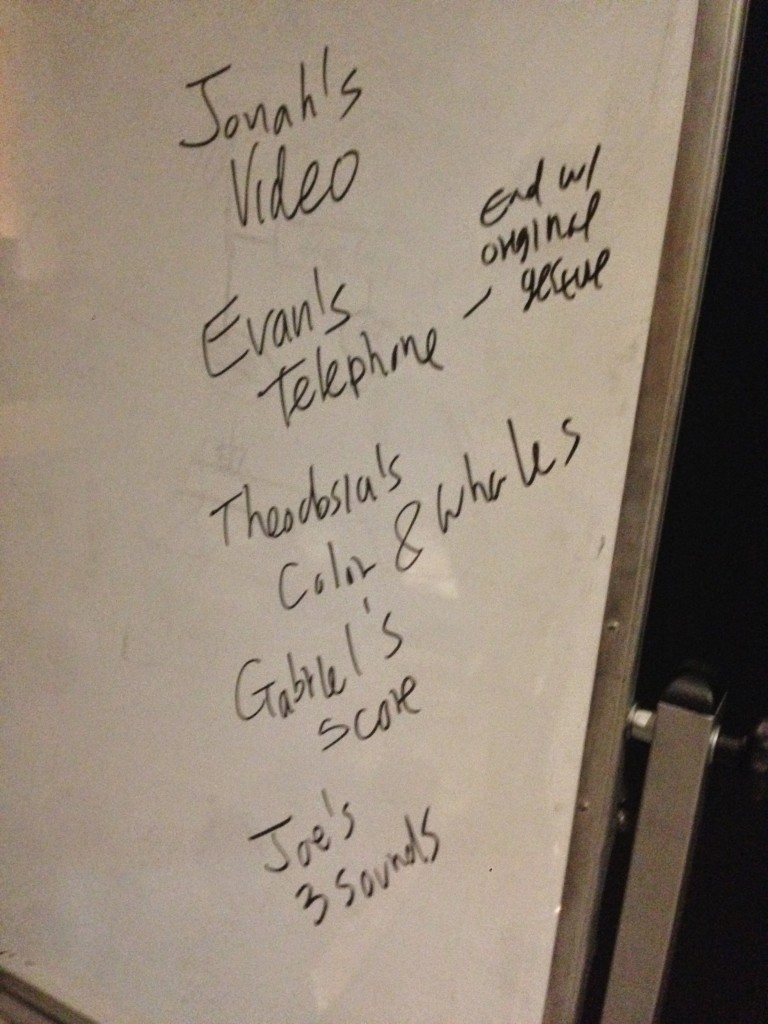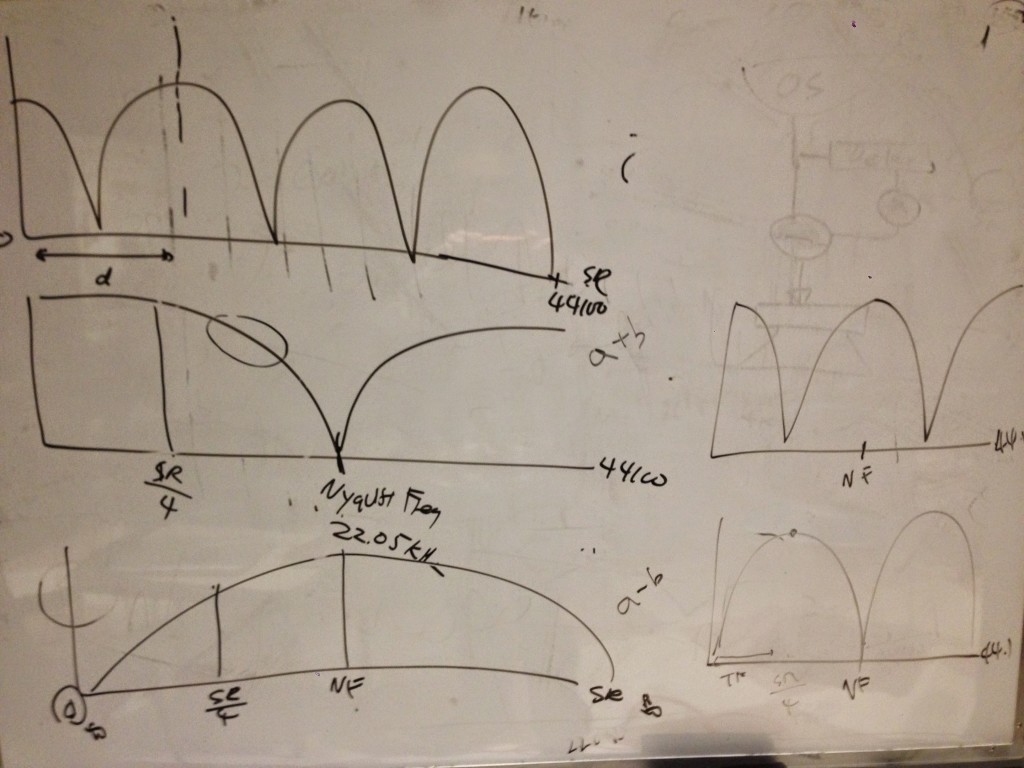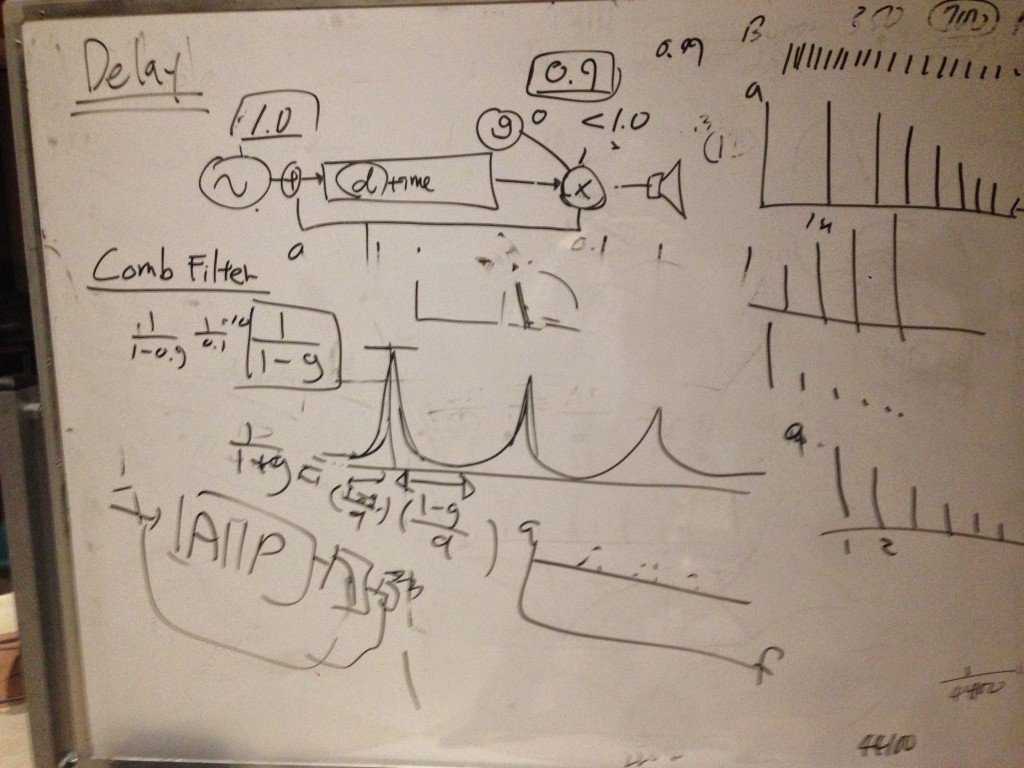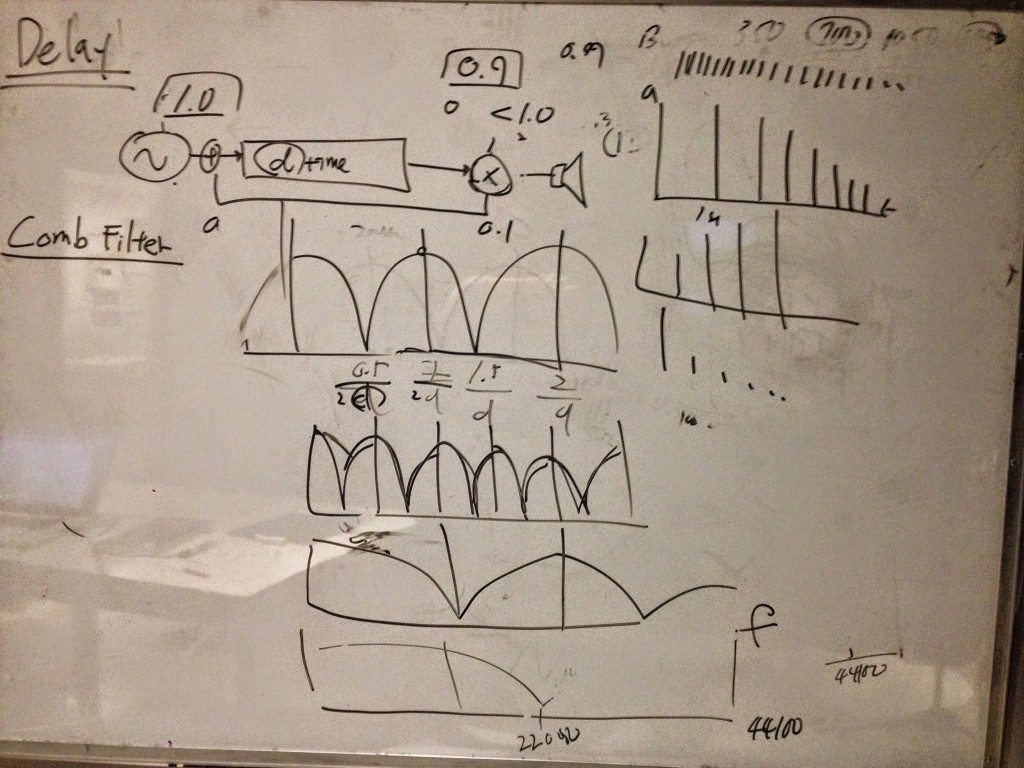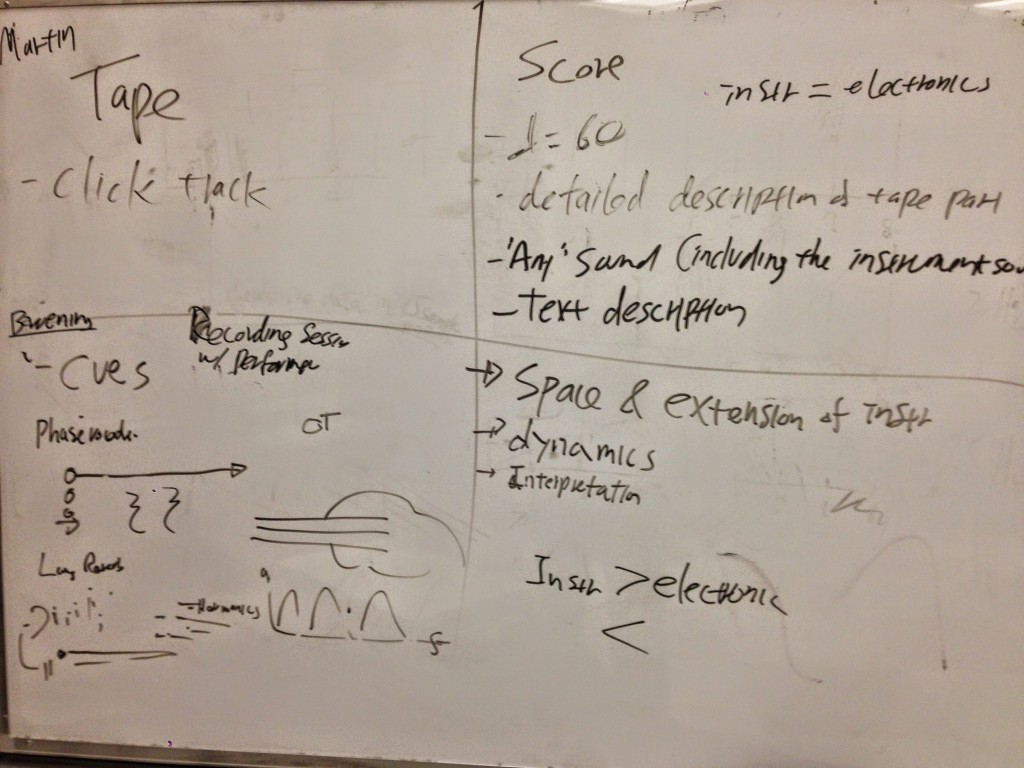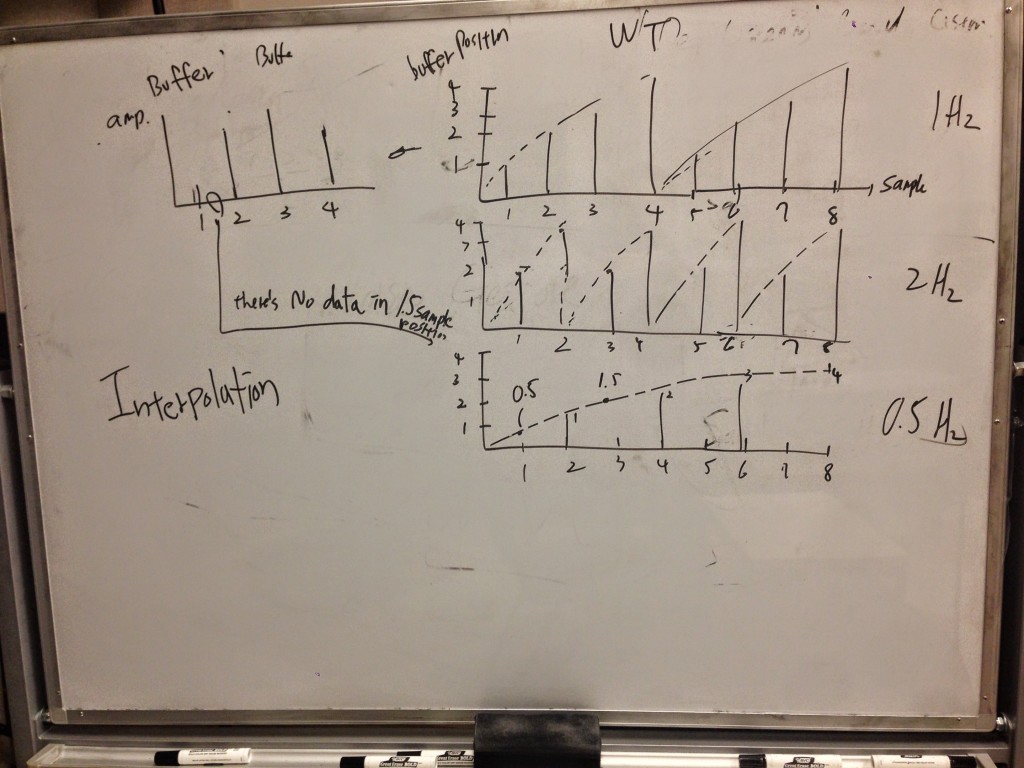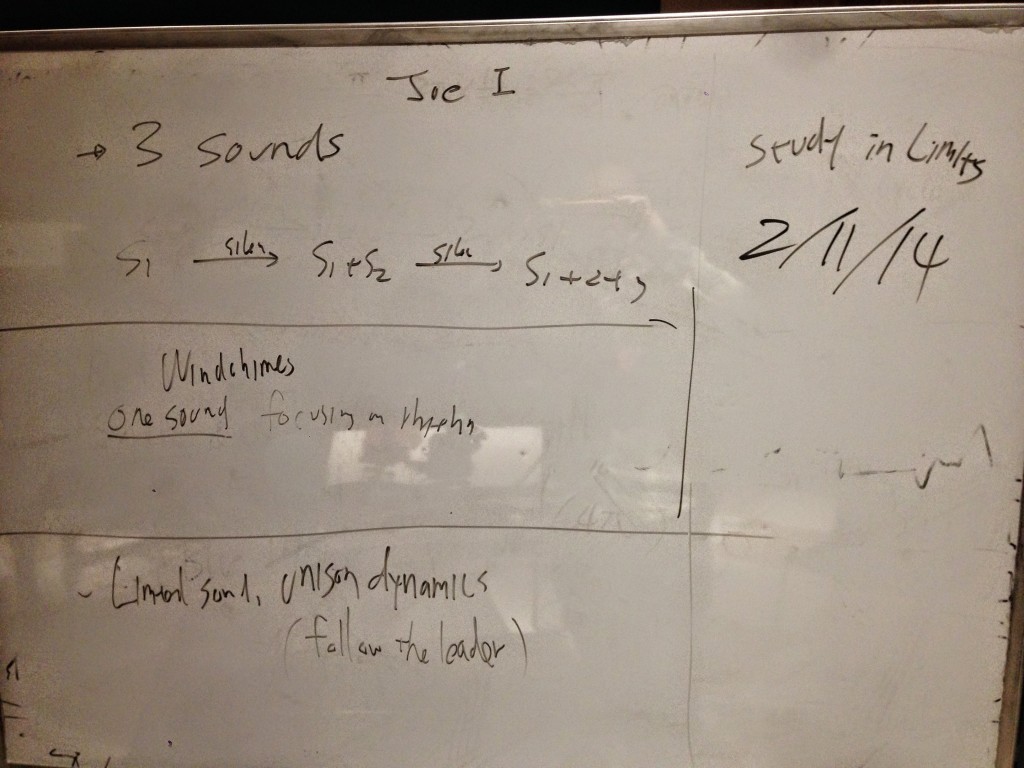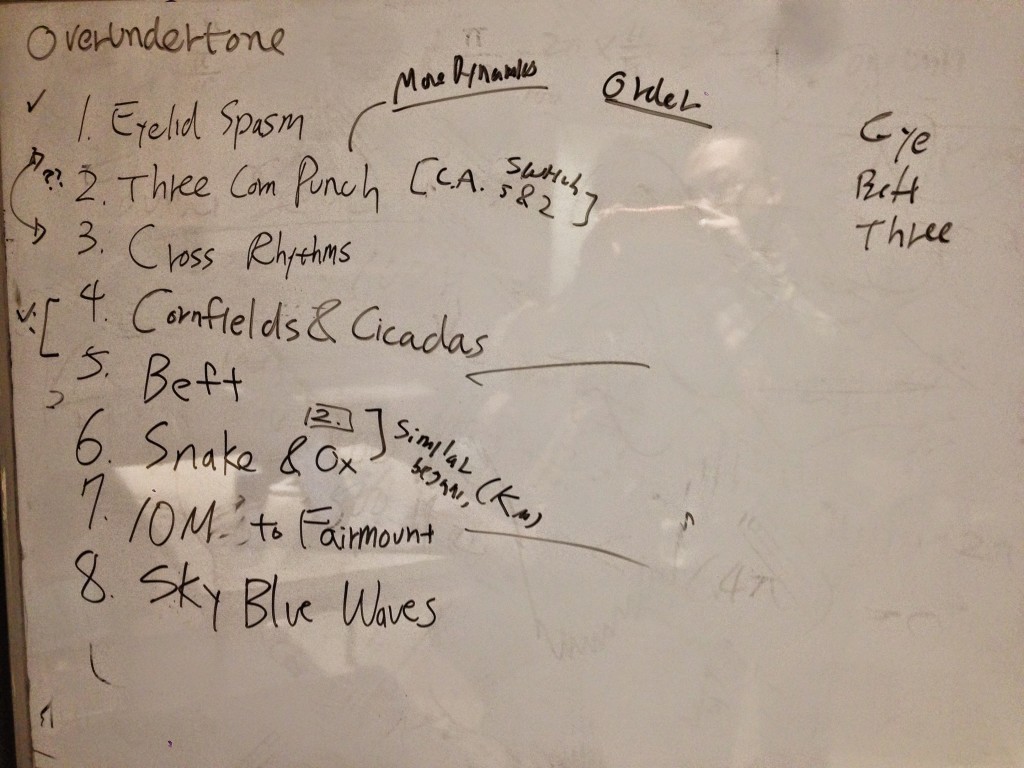I taught two introductory classes about electroacoustic music in Fall 2015. One of the assignments in these classes is a weekly listening report on selected music. Can you guess the topics discussed in each week by looking at the listening list?
Week 1:
Autumn Signal (1978) by Joan La Barbara : Identify signal processing techniques that extends the singer’s acoustic limits
Klang (1982) by Jonty Harrison : What is the computer’s role in creating harmonic language and form of the piece?
Week 2:
Out of Breath (2000) by Paul Koonce : What can you listen and identify besides “two” flute notes?
Kits Beach Soundwalk (1986) by Hildegard Westerkamp : How were the studio techniques used to narrate the story in this piece?
Read & Summarize Section 1 (pg 1-7) of Sound Reinforcement Handbook by Davis and Jones
Week3:
Read pg 9-10 of Living Electronic Music about WSP and Kits Beach Soundwalk
Read Soundscape and Truth section (p120-124) of the same book
Gainesville Soundscape (2007) by Joo Won Park : There is no need to write a summary on your teacher’s piece, but have a listen.
Appalachian Grove I (1977) by Laurie Spiegel : Could this piece have been played by non-electronic ensemble (i.e. orchestra)? Why or why not?
Week4:
Two-Part Invention in F Minor (1977) by Wendy Carlos : discuss the historical/social significance of this piece.
Compare and contrast Bye Bye Butterfly (1965) by Pauline Oliveros and Silver Apples of the Moon (1967) by Morton Subotnick. Do a little research on the instrumentation and their usage.
Week5:
Crystal (1982) by Maggi Payne : This piece may appear to have no conventional sense of rhythm. What should we listen for, then?
1971 Arp 2600 by Benge (2007) : The artist uses the same synthesizer we have in the Studio 4. Discuss how envelopes, filters, and oscillators were used in this piece.
Week 6:
Apparitions (2004) by Ed Martin : How effective was the notations of electronic parts in this piece?
O Superman (1982) by Laurie Anderson : If you were to perform this piece on stage, how will your setup look like?
Week 7:
Listening/Reading Report I is due
Week 8:
Fall Recess
Week 9:
Cubicle (2007) by Paul Riker : Discuss the form of this piece.
Three Fictions (Northern Mix) (2000) by Natasha Barrett : The composer states that “each movement presents a brief glimpse of a sight, a sound, a sensation.” Do you agree?
Week 10:
Requiem (1973) by Michel Chion : The piece was recorded/edited/processed in magnetic tape. Listen to the entire album. Write a response on techniques (you may need to do some research) and aesthetics.
Week 11:
Maa (Earth) I. Journey (1991) by Kaija Saariaho : Discuss the transitions from one section to another.
Grains of Voices (1995) by Ake Parmerud : Describe how the sense of time and place was composed and manipulated in this piece.
Week 12:
The following pieces use sound materials quite different from what we have heard so far in the class. Describe how the two pieces use such sounds to create music (or not).
10’00 (2006) by Shibuya, Moslang, Nakamura
Time…dot (2002) by Carsten Nicolai & Alva Noto
Week 13:
Read one audio/electronic music magazine available the public lab. Write a summary on the magazine itself or an article.
Week 14:
Compare and contrast the following two pieces. Discuss the artistic usage of time and place.
sparrows in supermarkets (2011) by Paula Matthusen
Petite Musique Sentimentale (1984) by Yves Daoust
Week 15:
Submit the listening/reading report BEFORE the reading period begins.

